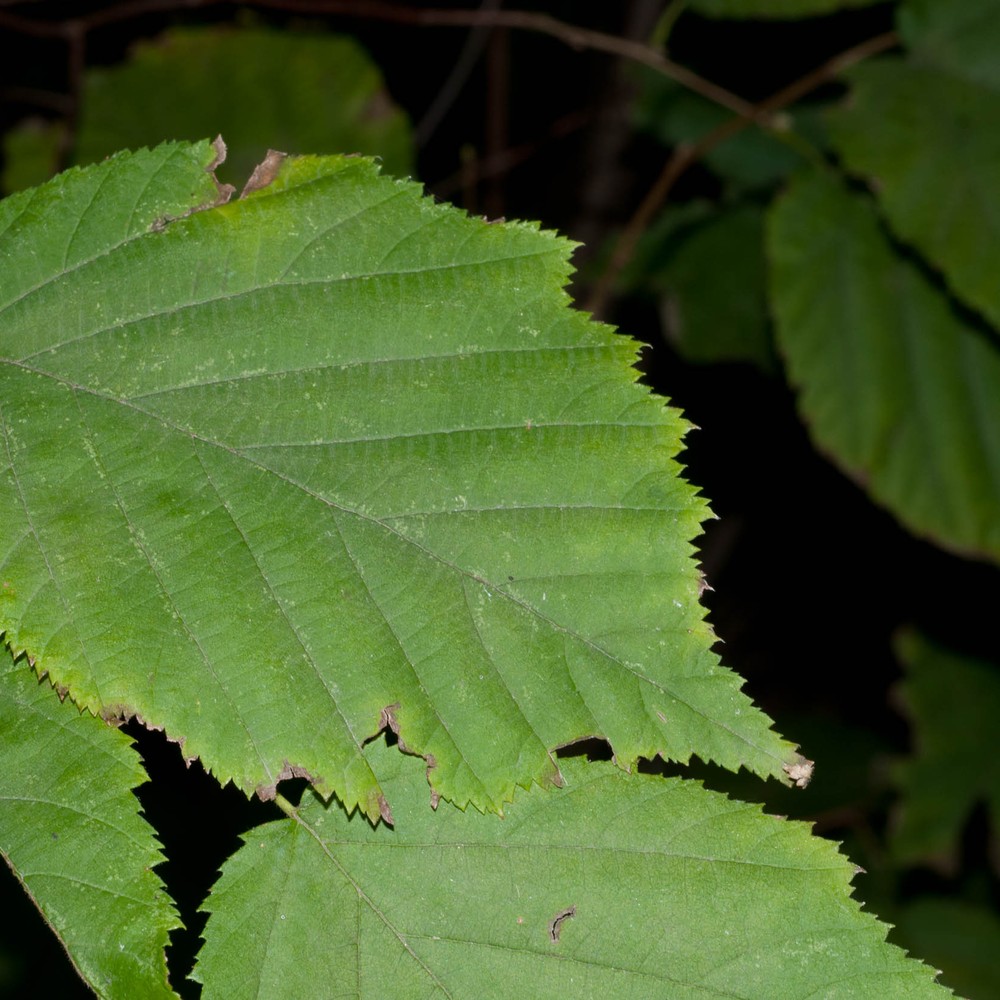Beaked hazelnut
(Corylus cornuta cornuta)

Description
Corylus cornuta, the beaked hazelnut (or just beaked hazel), is a deciduous shrubby hazel with two subspecies found throughout most of North America. The Eastern beaked hazel is found from southern Canada south to Georgia, while the Western beaked hazel occurs along the west coast from Alaska to California. It can reach 4–8 metres (13–26 ft) tall with stems 10–25 cm (4–9+3⁄4 in) thick with smooth gray bark, but it can also remain relatively small in the shade of other plants. It typically grows with several trunks. The leaves are green, rounded oval with a pointed tip, coarsely double-toothed, 5–11 cm (2–4+1⁄4 in) long and 3–8 cm (1+1⁄4–3+1⁄4 in) broad, with soft and hairy undersides. The male flowers are catkins that form in the fall, and pollinate the single female flowers the following spring to allow the fruits to mature through the summer season. The beaked hazelnut is named for its fruit, which is a nut enclosed in a husk with a tubular extension 2–4 cm (3⁄4–1+1⁄2 in) long that resembles a beak. Tiny filaments protrude from the husk and may stick into, and irritate, skin that contacts them. The spherical nuts are edible, though small and surrounded by a hard shell. The beaked hazel is the hardiest of all hazel species, surviving temperatures of −50 °C (−58 °F) at its northern limits. It has a shallow and dense root system which is typically only 15 centimetres (5.9 in) deep, with a single taproot which may extend 0.6 metres (2.0 ft) below the surface. Although C. cornuta is somewhat shade tolerant, it is more common in forests with fairly open canopies than denser ones. However, it is intolerant of entirely open areas that get hot and dry. Fire kills the above-ground portion of the shrub, but it resprouts fairly readily after fire from its root crown or rhizomes. It recovers after fire to the extent that American Indians in California and Oregon used fire to encourage its growth. In boreal regions, it is threatened by the invasive Siberian peashrub, which can invade and achieve dominance in understories
Taxonomic tree:







